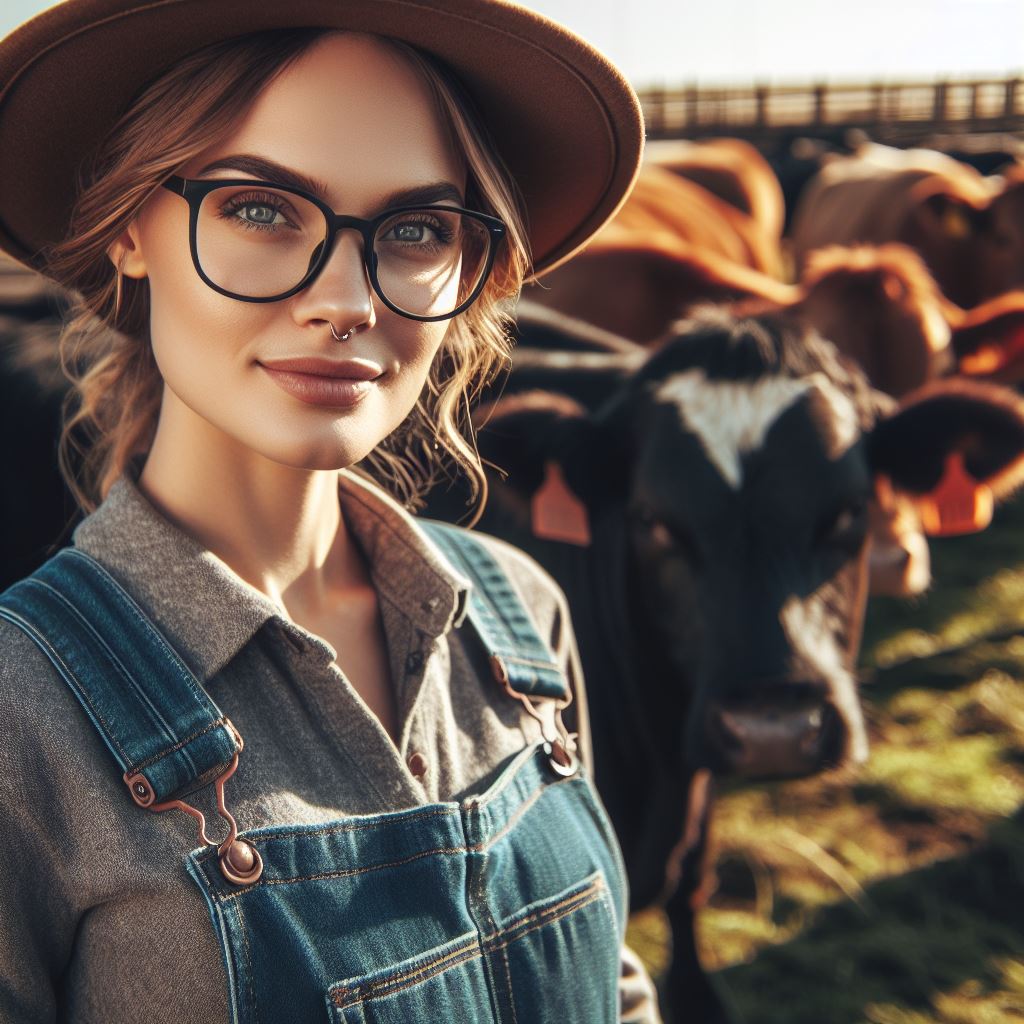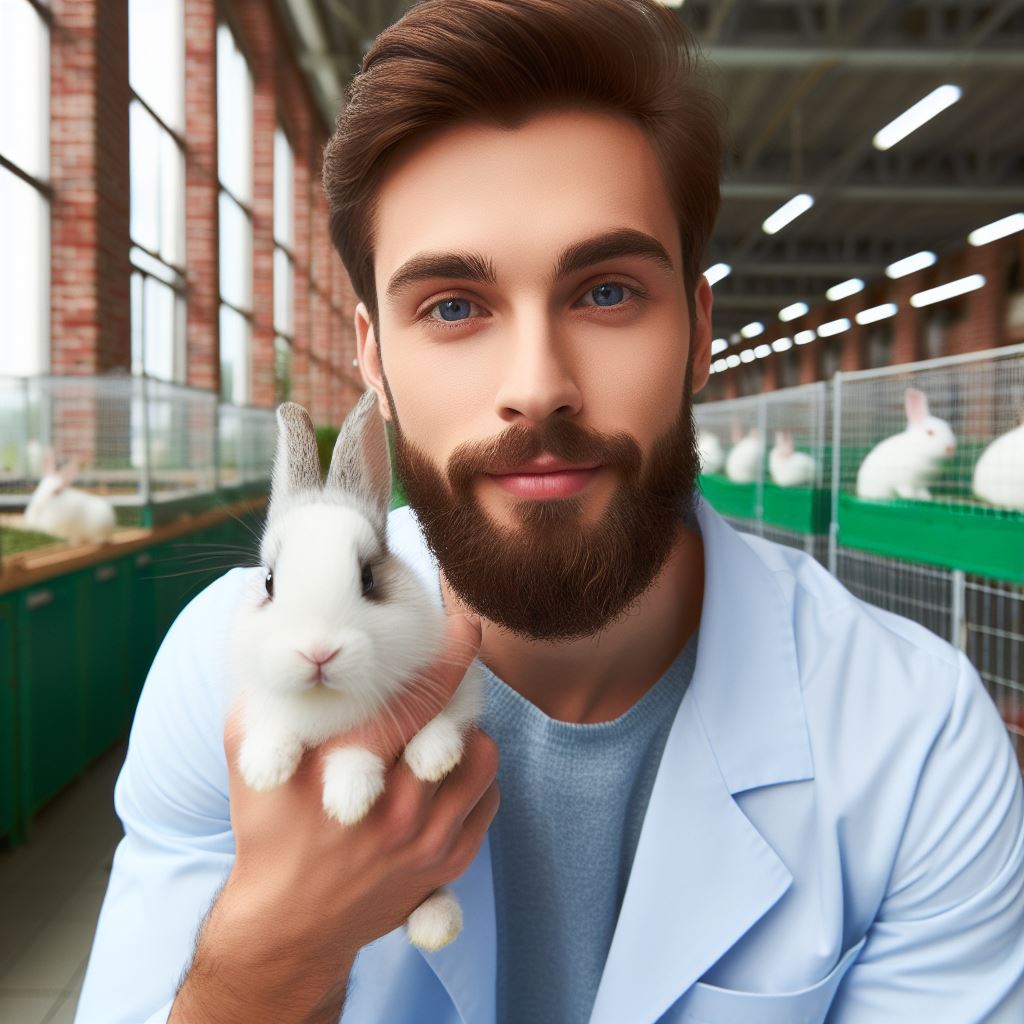Introduction
Brief overview of beef cattle genetics
Beef cattle genetics is an important aspect of beef production, as it directly influences the quality of meat that is produced.
By understanding the genetics of cattle, breeders and producers can make informed decisions regarding which traits to prioritize in order to produce better beef.
Cattle genetics refer to the hereditary traits that are passed down from one generation to the next.
These traits can include things like growth rate, muscle development, marbling, tenderness, and overall carcass quality.
By selectively breeding cattle with desirable traits, breeders can improve the overall quality and productivity of their herds.
Importance of understanding cattle genetics for better beef production
Understanding cattle genetics is important for beef producers because it allows them to make well-informed decisions when selecting breeding stock.
By choosing animals with superior genetics, producers can produce offspring with better meat quality, improved growth rates, and increased disease resistance.
This not only improves the overall profitability of the operation but also ensures that consumers receive a high-quality product.
Furthermore, a thorough understanding of cattle genetics enables breeders to implement genetic improvement strategies such as artificial insemination and embryo transfer.
Through these techniques, desirable traits can be rapidly disseminated throughout the herd, leading to quicker genetic progress.
This can have a significant impact on beef quality and productivity, ultimately benefiting both producers and consumers alike.
Lastly, beef cattle genetics play a vital role in beef production.
Understanding and selectively breeding for desirable traits can lead to improved meat quality, increased productivity, and ultimately, a more profitable beef operation.
Therefore, it is essential for beef producers to have a comprehensive understanding of cattle genetics in order to achieve success in the industry.
Read: Optimal Nutrition for Chickens & Turkeys
Transform Your Agribusiness
Unlock your farm's potential with expert advice tailored to your needs. Get actionable steps that drive real results.
Get StartedBasic Concepts of Beef Cattle Genetics
Definition of genetics and its role in determining traits
Genetics is the study of heredity and the passing on of traits from parents to offspring.
In beef cattle, genetics plays a crucial role in determining various traits such as weight gain, meat quality, and disease resistance.
Inheritance patterns and genetic variation
Inheritance patterns in beef cattle genetics can follow different modes, including dominant, recessive, and co-dominant.
These patterns determine how certain traits are expressed in offspring.
Genetic variation refers to the differences in genes among individuals within a population, leading to diverse characteristics.
Maintaining a diverse genetic pool is essential for avoiding genetic disorders and ensuring the overall health and adaptability of beef cattle.
Breeders strive to introduce new alleles into populations periodically through selective breeding programs.
Genetic improvement in beef cattle involves several strategies, including:
- Selective breeding: Choosing individuals with desirable traits to be parents of the next generation.
- Inbreeding: Mating closely related individuals to concentrate desirable traits, but this can also increase the risk of genetic defects.
- Crossbreeding: Mating individuals from different breeds to exploit complementary traits and heterosis (hybrid vigor).
- Artificial insemination: The process of introducing semen from selected sires into females to improve genetics on a broader scale.
Key terminology related to beef cattle genetics (genotype, phenotype, alleles, etc.)
- Genotype: The genetic makeup of an individual, comprising the combination of alleles inherited from its parents.
- Phenotype: The observable traits or characteristics of an individual resulting from the interaction between its genotype and the environment.
- Alleles: Different forms of a gene that occupy the same position on a pair of chromosomes.
- Dominant allele: An allele that is expressed over another allele when present in heterozygous individuals.
- Recessive allele: An allele that is expressed only when present in homozygous individuals.
- Homozygous: Having identical alleles for a particular gene.
- Heterozygous: Having different alleles for a particular gene.
- Punnett Square: A tool used to predict the possible genotypes and phenotypes of offspring based on the genotypes of their parents.
Understanding these key concepts helps breeders make informed decisions when selecting cattle for desirable traits.
By evaluating the genotype and phenotype of potential breeding animals, breeders can enhance the quality and productivity of their beef cattle.
Advancements in genetic technologies have further revolutionized beef cattle breeding.
Nowadays, breeders can use tools like DNA testing to identify desirable traits at an early stage, making the selection process more efficient.
Marker-assisted selection and genomic selection help breeders predict an animal’s genetic potential with greater accuracy.
Therefore, understanding basic concepts of beef cattle genetics is essential for breeders seeking to improve the quality of their herds.
By comprehending inheritance patterns, genetic variation, and key terminology, breeders can make informed decisions in selecting and managing their cattle.
Furthermore, utilizing genetic technologies can accelerate the genetic progress and overall productivity of beef cattle.
With continued advancements in genetics research, the future of beef cattle genetics holds tremendous potential for creating better and more efficient beef production systems.
Read: Turkey Health: Preventing Flock Diseases
Important Traits for Better Beef Production
In beef cattle genetics, various traits play a crucial role in achieving better beef production.
This section will discuss the importance of marbling and intramuscular fat, muscling and meat yield, as well as calving ease and maternal traits.
Marbling and Intramuscular Fat
- Marbling is the presence of intramuscular fat within the muscle tissue, contributing to meat quality by enhancing tenderness, juiciness, and flavor. Meats with higher marbling are more desirable to consumers.
- Genetic factors strongly influence marbling and intramuscular fat. Through selective breeding, producers can improve the genetic potential for higher marbling in their beef cattle herds.
- Certain genetic lines have been recognized for their superior marbling traits. Angus cattle, known for their marbling excellence, are widely popular in the beef industry. Additionally, Japanese Wagyu cattle are highly prized for their exceptional marbling.
Muscling and Meat Yield
- Muscling refers to the development and size of muscles in beef cattle. Muscling is crucial in determining the amount of meat that can be harvested from an individual animal.
- Genetic factors significantly influence muscling and overall meat yield. Producers can select cattle with superior muscling genetics to maximize meat production in their herds.
- Breeds such as Charolais and Limousin are known for their exceptional muscling traits. These breeds are commonly used in crossbreeding programs to improve muscling and meat yield in commercial beef production.
Calving Ease and Maternal Traits
- Calving ease is crucial for cattle producers as it affects the profitability and labor requirements associated with calving. Difficult calvings can be risky for both cows and calves.
- Genetic markers have been identified that are linked to improved calving ease. Through genetic testing and selection, producers can ensure easier calving experiences in their herds.
- Maternal traits, such as milk production and mothering ability, have a genetic influence. Breeding for superior maternal genetics can result in increased calf survival and overall productivity in cow-calf operations.
Generally, understanding and focusing on important traits in beef cattle genetics can lead to better beef production.
Marbling and intramuscular fat impact meat quality, while muscling and meat yield influence the quantity of harvested meat.
Additionally, calving ease and maternal traits play vital roles in the overall productivity and efficiency of cattle operations.
By prioritizing these traits, producers can enhance the quality and profitability of their beef enterprises.
Showcase Your Farming Business
Publish your professional farming services profile on our blog for a one-time fee of $200 and reach a dedicated audience of farmers and agribusiness owners.
Publish Your ProfileRead: Deer Farming: Managing Health & Disease

Selecting and Breeding for Better Beef Cattle Genetics
Importance of selecting genetically superior cattle
- Selecting genetically superior cattle is crucial for improving beef production and profitability.
- Genetically superior cattle have desirable traits such as increased growth rate and meat quality.
- By selecting genetically superior cattle, producers can improve overall herd performance and efficiency.
- Genetic selection also helps in reducing the prevalence of genetic disorders and diseases.
- It ensures the transmission of favorable traits to future generations, leading to better beef cattle genetics.
Tools and technologies available for genetic selection
- DNA testing and genetic markers: DNA testing allows producers to identify specific genetic markers associated with desirable traits. It helps in selecting cattle with superior traits and avoiding animals prone to genetic disorders. DNA testing provides more accurate and reliable information for genetic selection. It enables producers to make informed breeding decisions and improve the overall genetic potential of their herd.
- Genomic selection and its benefits: Genomic selection uses DNA markers to directly predict an animal’s genetic merit. It allows producers to select animals at a young age without waiting for phenotypic expressions. Genomic selection boosts the rate of genetic progress while reducing generation intervals. It accelerates the overall genetic improvement of the herd and enhances beef cattle genetics.
Breeding strategies to improve genetic traits
- Crossbreeding and hybrid vigor: Crossbreeding involves mating animals from different breeds to capitalize on heterosis or hybrid vigor. Hybrid vigor enhances traits like growth rate, fertility, and disease resistance in the offspring. Crossbreeding improves the adaptability and performance of beef cattle in various production environments.
- Line breeding and inbreeding considerations: Line breeding involves mating animals within the same genetic line or family to concentrate favorable traits. It helps in fixing and preserving desirable traits, promoting uniformity within the herd. However, inbreeding should be carefully managed to avoid the accumulation of detrimental recessive traits. Effective breeding strategies involve a balanced approach that considers both genetic diversity and improvement.
By utilizing the appropriate tools and breeding strategies, beef producers can significantly enhance their cattle’s genetic potential, leading to better beef production outcomes.
Selecting genetically superior cattle ensures the transmission of desirable traits and improves overall herd performance.
Tools like DNA testing and genomic selection aid in identifying and predicting genetic merit accurately, enabling producers to make informed breeding decisions.
Crossbreeding and hybrid vigor capitalize on the benefits of heterosis, while line breeding helps fix and preserve favorable traits.
It is essential to strike a balance between genetic improvement and maintaining genetic diversity to ensure long-term success in beef cattle genetics.
With the right approach, beef producers can continually improve their herds and contribute to the industry’s growth and sustainability.
Read: Innovative Poultry Housing Solutions in 2024
Conclusion
The role of beef cattle genetics in producing better beef cannot be overstated.
The traits passed down through the genetics of breeding animals directly affect the quality and value of the meat produced.
Therefore, it is crucial for cattle producers to prioritize genetic selection.
By carefully selecting breeding stock based on desirable traits such as marbling, tenderness, and feed efficiency, producers can enhance the overall quality of the beef they produce.
This not only benefits their bottom line but also satisfies the increasing demand for high-quality beef in the market.
Looking ahead, the future of beef cattle genetics holds great potential.
Advancements in technology, such as genomics, offer even more accurate and efficient methods for selecting superior breeding animals.
This, coupled with increased awareness and education on the importance of genetics, will continue to shape the industry.
Therefore, it is crucial for cattle producers to stay informed, seek out resources, and collaborate with experts to make informed decisions regarding genetic selection.
By continuously improving the genetics of their herds, producers can contribute to a more sustainable and profitable beef industry.
It is time for cattle producers to take action and prioritize genetic selection to unleash the full potential of their herds and ensure the future success of the beef industry.




